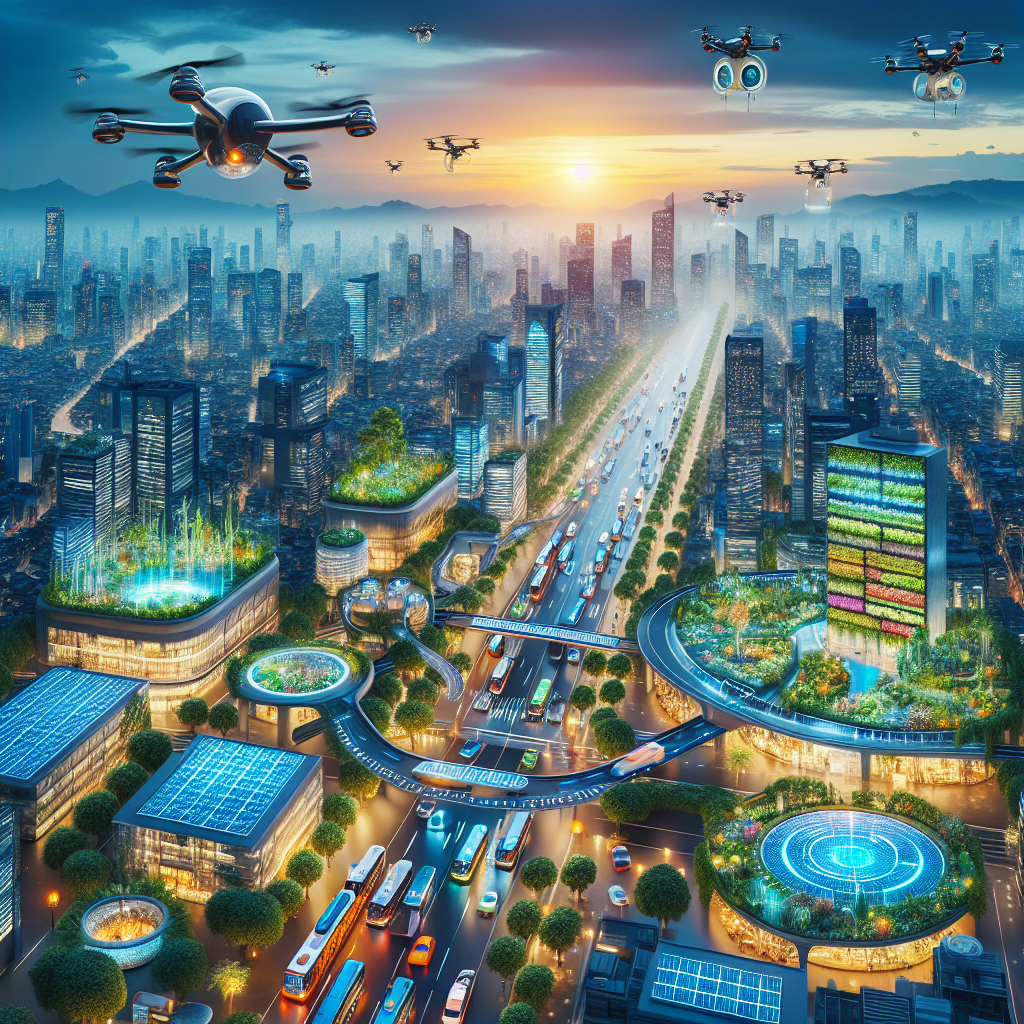The Role of AI in Smart Cities: Building Sustainable Urban Environments
Introduction
In recent years, the concept of smart cities has gained momentum as urban populations continue to grow at an unprecedented rate. With more than half of the world’s population now living in cities, the need for innovative solutions to address the challenges of urbanization has never been greater. Artificial Intelligence (AI) is playing a key role in transforming traditional cities into smart cities, where technology is used to improve the quality of life for residents, reduce environmental impact, and create more sustainable urban environments.
AI technology has the potential to revolutionize the way cities are managed and operated, from transportation and energy systems to waste management and public services. By harnessing the power of AI, cities can become more efficient, resilient, and responsive to the needs of their residents. In this article, we will explore the role of AI in smart cities and how it is helping to build sustainable urban environments for the future.
The Benefits of AI in Smart Cities
There are a number of key benefits that AI can bring to smart cities, including:
1. Improving Efficiency: AI can help cities optimize their infrastructure and services, leading to improved efficiency and cost savings. For example, AI-powered traffic management systems can reduce congestion and improve traffic flow, while smart energy grids can optimize energy usage and reduce waste.
2. Enhancing Sustainability: AI can help cities reduce their environmental impact by optimizing energy usage, reducing waste, and promoting sustainable practices. For example, AI-powered waste management systems can optimize collection routes and schedules, leading to reduced emissions and improved recycling rates.
3. Enhancing Safety and Security: AI can help cities improve public safety and security by analyzing data from sensors and cameras to detect potential threats and respond in real-time. For example, AI-powered surveillance systems can detect suspicious behavior and alert law enforcement officials before a crime occurs.
4. Improving Citizen Engagement: AI can help cities better engage with their residents and provide more personalized services. For example, AI-powered chatbots can provide real-time information and support to residents, while AI-powered decision-making tools can help city officials make more informed decisions based on data and analytics.
5. Fostering Innovation: AI can help cities foster innovation and creativity by providing new tools and technologies to support economic growth and development. For example, AI-powered incubators and accelerators can help startups and entrepreneurs access resources and support to bring their ideas to market.
Case Studies of AI in Smart Cities
There are many examples of how AI is being used in smart cities around the world to improve urban environments and enhance the quality of life for residents. Some notable case studies include:
1. Singapore: Singapore is a global leader in smart city technology, with initiatives such as the Smart Nation program that aims to harness technology to improve the quality of life for residents. AI is being used in Singapore to optimize transportation systems, improve energy efficiency, and enhance public services.
2. Barcelona: Barcelona has implemented a number of AI-powered initiatives to improve the sustainability and livability of the city, including smart parking systems, waste management solutions, and energy-efficient buildings. These initiatives have helped Barcelona reduce its environmental impact and create a more sustainable urban environment.
3. Dubai: Dubai is using AI to transform itself into a smart city of the future, with initiatives such as the Dubai Blockchain Strategy and the Dubai Electricity and Water Authority’s AI program. These initiatives are helping Dubai become a more efficient, resilient, and sustainable city that can better serve its residents.
FAQs
Q: What is a smart city?
A: A smart city is a city that uses technology and data to improve the quality of life for residents, reduce environmental impact, and create more sustainable urban environments.
Q: How does AI help build sustainable urban environments?
A: AI helps build sustainable urban environments by optimizing infrastructure and services, reducing energy usage and waste, improving public safety and security, enhancing citizen engagement, and fostering innovation.
Q: What are some examples of AI in smart cities?
A: Some examples of AI in smart cities include traffic management systems, energy grids, waste management solutions, surveillance systems, chatbots, decision-making tools, and incubators/accelerators.
Q: What are the benefits of AI in smart cities?
A: The benefits of AI in smart cities include improving efficiency, enhancing sustainability, enhancing safety and security, improving citizen engagement, and fostering innovation.
Conclusion
As urban populations continue to grow, the need for innovative solutions to address the challenges of urbanization has never been greater. AI technology has the potential to revolutionize the way cities are managed and operated, from transportation and energy systems to waste management and public services. By harnessing the power of AI, cities can become more efficient, resilient, and responsive to the needs of their residents, leading to more sustainable urban environments for the future. The role of AI in smart cities is crucial in building sustainable urban environments that can adapt to the challenges of the 21st century.

